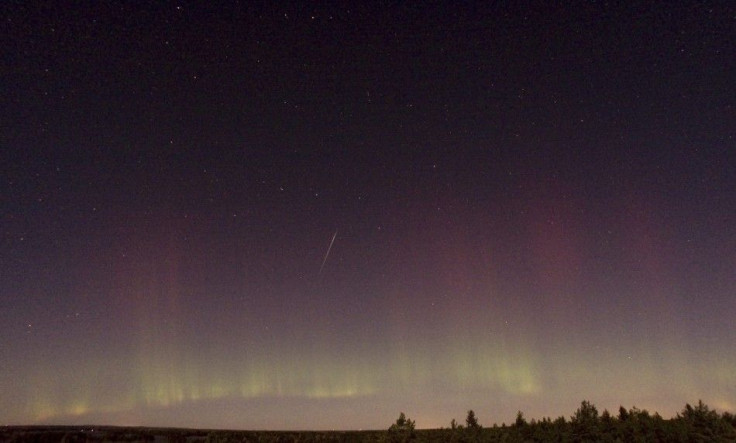Draconid Meteor Shower 2020: When, Where And How To Watch 'Shooting Star' Display
KEY POINTS
- The annual Draconid meteor shower's peak will end on Thursday night into Friday morning
- Stargazers along the East Coast of North America will have the best view of the shower
- The Draconids are streams of debris from Comet 21P/Giacobini-Zinner
Bring out your blankets and keep an eye on the night sky this week to watch “the dragon” in action. The annual Draconid meteor shower is gearing up for another show Thursday evening into Friday morning after it put on displays Tuesday and Wednesday.
According to CNN, stargazers along the East Coast of North America are expected to have the best view, while those living in the tropical areas of the Southern Hemisphere will see a more reduced shower. The waning gibbous moon may wash out all but the brightest meteors.
People living in an urban area are encouraged to take a drive as the city’s artificial lights can make the meteor shower appear faint. Camping out in the country can triple the number of visible meteors. No special equipment is needed to see Draconid.
But don’t get your hopes up for a spectacular meteor display. According to EarthSky, the Draconid shower usually offers only five visible meteors per hour, however, the meteor storm occasionally “awakens” and produces an incredible and memorable meteor display.
In 1933, Europe was treated to 500 Draconids per minute. The western U.S. had the opportunity of seeing thousands of Draconids per hour during its peak in 1946. In 2011, European observers saw 600 meteors per hour, as reported by Space.com.
The Draconids happens when Earth crosses the orbital path of Comet 21P/Giacobini-Zinner and the stream of debris it has shed over eons. Experts are not predicting a close pass between Earth and the comet, which means there is a lesser chance of a dazzling Draconid storm this year.
If you’re feeling underwhelmed by the Draconid showers, more meteor displays are coming soon. Later this month, the Orionids will peak on the nights of Oct. 20-21. They will be followed by the Southern Taurids on Oct. 29-30.
On Nov. 11-12, the Northern Taurids will peak during the night, while the Leonids are set to appear Nov. 16-17.
On Dec. 13-14, the night sky will be filled with meteors from the Geminids. The Ursids will also make an appearance shortly before Christmas on the evenings of Dec. 21-22.

© Copyright IBTimes 2024. All rights reserved.






















